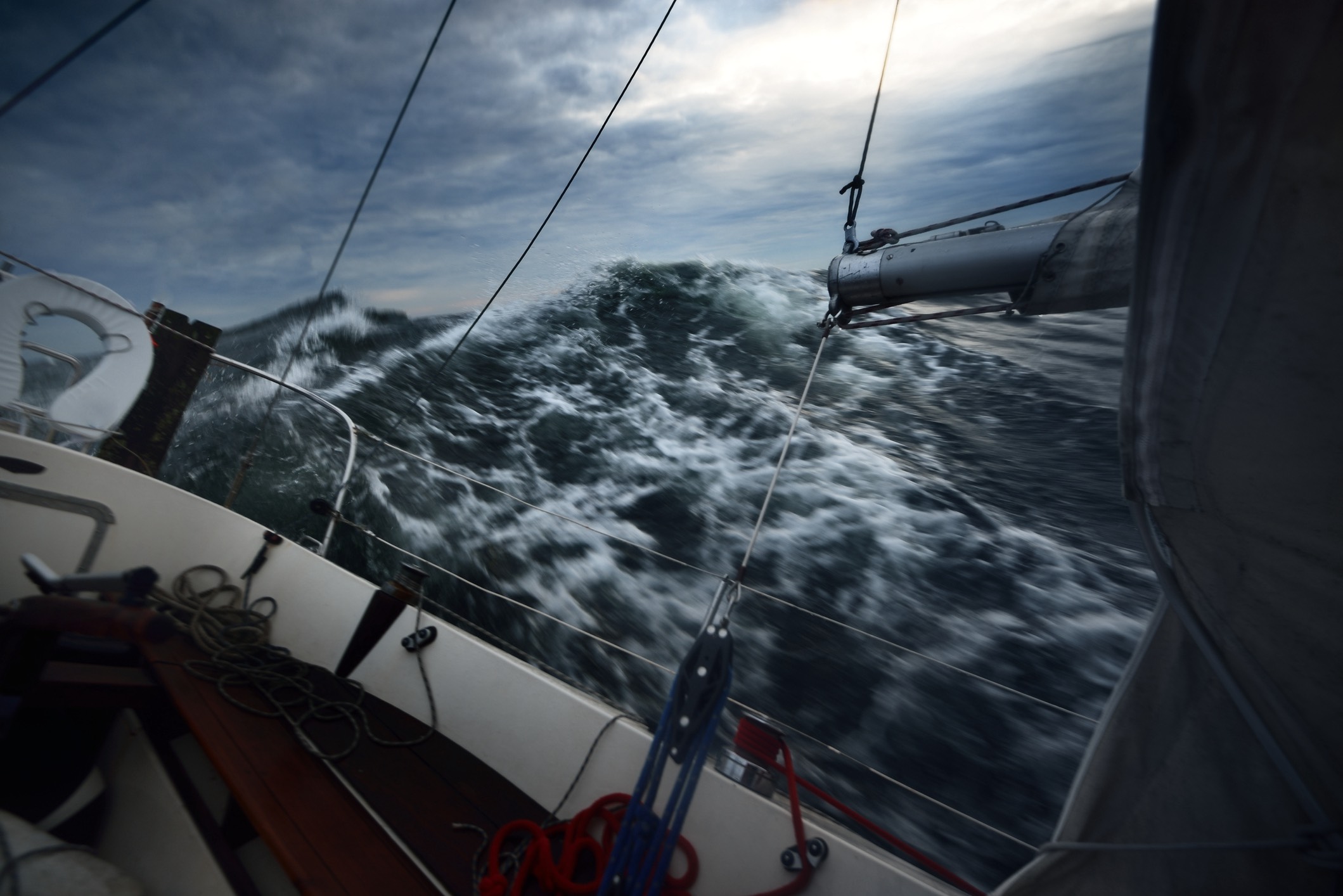What are the Roaring Forties, Furious Fifties and Screaming Sixties?
If wind could talk, the Roaring Forties, Furious Fifties and Screaming Sixties would be a rambunctious bunch. But even without a real voice, these powerful winds are anything but quiet.
What causes wind?
At its most basic level, wind occurs when air is forced to move between areas of contrasting temperature and pressure in Earth’s atmosphere. Wind can move both horizontally and vertically.
The main thing that causes differences in temperature and pressure in Earth’s atmosphere is differential heating from the sun. Earth’s equator receives a lot more direct sunlight than its polar regions, which causes higher temperatures near the equator and much lower temperatures at the poles.
If Earth wasn’t rotating, this differential heating would cause warm air to rise near the equator and flow towards the poles in the upper atmosphere, while cooler air flowed from the poles to the equator near the surface. This simple global circulation would largely balance out the temperature differences caused by the sun.
However, Earth's constant rotation causes air near the surface to turn towards the east as it tries to move from north to south or south to north across Earth’s surface, due to a phenomenon called the Coriolis effect.
The Coriolis effect causes Earth’s global air circulation pattern to split into three distinct zones, or cells, in each hemisphere: the Hadley cells, the Ferrel cells and the Polar cells.

Image: Earth’s global circulation model, showing three distinct regions of circulating air in each hemisphere. Source: Bureau of Meteorology
Hadley cell
The cell of circulating air closest to the equator is called the Hadley Cell, which extends from the equator to about 30 to 40 degrees north and south. The Hadley Cell drives the trade winds and produces a near perpetual region of clouds and thunderstorms known as the Intertropical Convergence Zone (ITCZ).
Ferell cell
The next cell on the poleward side of the Hadley cell is called the Ferell cell, which extends from about 35 degrees to 60 degrees north and south. Air in the Ferell cell sinks near 30 to 40 degrees north and south, producing the subtropical ridge, before flowing towards the poles near the surface.
Polar cell
Air in the region closest to Earth’s poles circulates through the polar cell, which extends from about 60 or 70 degrees north and south all the way to the poles. Air in the polar cell sinks over the North and South Poles before flowing back towards the equator at the surface.
Mid-latitude westerlies
The influence of the Coriolis effect on the surface winds in the Ferell cell, combined with the abundance of open ocean in the Southern Hemisphere, creates a zone of very powerful westerly winds in the mid-latitudes of the Southern Hemisphere. These wild westerlies surround Antarctica and extend between about 40 and 70 degrees south.
The Roaring Forties are found between 40 and 50 degrees south, which is located just south of the Australian mainland. This band of winds flows over Tasmania, the South Island of New Zealand, some southern provinces of Argentina and the French Southern and Antarctic Lands. Sailors have used the Roaring Forties for centuries to help propel them around the world. These winds are also seen as a key resource for producing wind power in southern Australia in the future.

The Furious Fifties extend form about 50 to 60 degrees south, blowing over mostly ocean and far southern parts of South Argentina. These are an extension of the Roaring Forties but are typically a bit stronger because they have less interaction with land masses.
South of the Furious Fifties are the Screaming Sixties, which extend from about 60 to 70 degrees south. These frigid winds create towering waves and shove icebergs around the Southern Ocean, but they can be hindered by the edge of Antarctica and air flowing off the polar continent.
The Roaring Forties, Furious Fifties and Screaming Sixties are a wild part of our planet where wind speeds can exceed 100 km/h and wave can rise above 10 metres.
According to an old sailors' saying, "below 40 degrees south there is no law; beyond 50 degrees south, there is no God."